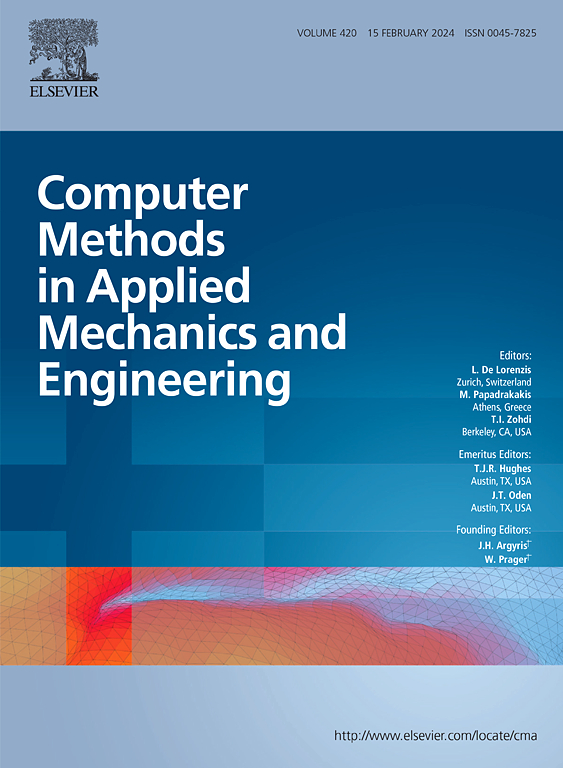Thermodynamically-Informed Iterative Neural Operators for heterogeneous elastic localization
IF 6.9
1区 工程技术
Q1 ENGINEERING, MULTIDISCIPLINARY
Computer Methods in Applied Mechanics and Engineering
Pub Date : 2025-04-01
DOI:10.1016/j.cma.2025.117939
引用次数: 0
Abstract
Engineering problems frequently require solution of governing equations with spatially-varying, discontinuous coefficients. Mapping large ensembles of coefficient fields to solutions can become a major computational bottleneck using traditional numerical solvers, even for linear elliptic problems. Machine learning surrogates such as neural operators often struggle to fit these maps due to sharp transitions and high contrast in the coefficient fields. Furthermore, in design applications any available training data is by definition less informative due to distribution shifts between known and novel designs. In this work, we focus on a canonical problem in computational mechanics: prediction of local elastic deformation fields over heterogeneous material structures subjected to periodic boundary conditions. We construct a hybrid approximation for the coefficient-to-solution map using a Thermodynamically-informed Iterative Neural Operator (TherINO). Rather than using coefficient fields as direct inputs and iterating over a learned latent space, we employ thermodynamic encodings – drawn from the constitutive equations – and iterate over the solution space itself. Through an extensive series of case studies, we elucidate the advantages of these design choices in terms of efficiency, accuracy, and flexibility. We also analyze the model’s stability and extrapolation properties on out-of-distribution coefficient fields and demonstrate an improved speed–accuracy tradeoff for predicting elastic quantities of interest.
基于热力学信息的非均质弹性局部化迭代神经算子
工程问题经常需要求解具有空间变化、不连续系数的控制方程。将系数场的大集合映射到解可能成为使用传统数值求解器的主要计算瓶颈,即使是线性椭圆问题。由于系数域的急剧过渡和高对比度,神经算子等机器学习替代品经常难以拟合这些地图。此外,在设计应用中,由于已知设计和新设计之间的分布变化,任何可用的训练数据根据定义都缺乏信息。在这项工作中,我们专注于计算力学中的一个典型问题:预测非均质材料结构在周期性边界条件下的局部弹性变形场。我们使用热力学信息迭代神经算子(TherINO)构建了系数-解映射的混合近似。我们不是使用系数场作为直接输入并在学习的潜在空间上迭代,而是使用热力学编码-从本构方程中提取-并在解空间本身上迭代。通过一系列广泛的案例研究,我们阐明了这些设计选择在效率、准确性和灵活性方面的优势。我们还分析了模型在分布外系数场上的稳定性和外推特性,并展示了预测感兴趣的弹性量的改进的速度-精度权衡。
本文章由计算机程序翻译,如有差异,请以英文原文为准。
求助全文
约1分钟内获得全文
求助全文
来源期刊
CiteScore
12.70
自引率
15.30%
发文量
719
审稿时长
44 days
期刊介绍:
Computer Methods in Applied Mechanics and Engineering stands as a cornerstone in the realm of computational science and engineering. With a history spanning over five decades, the journal has been a key platform for disseminating papers on advanced mathematical modeling and numerical solutions. Interdisciplinary in nature, these contributions encompass mechanics, mathematics, computer science, and various scientific disciplines. The journal welcomes a broad range of computational methods addressing the simulation, analysis, and design of complex physical problems, making it a vital resource for researchers in the field.

 求助内容:
求助内容: 应助结果提醒方式:
应助结果提醒方式:


